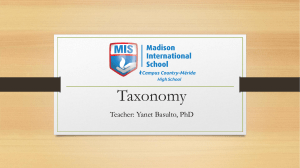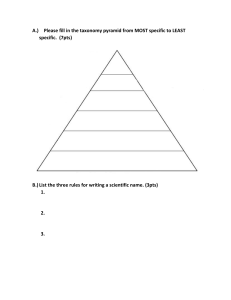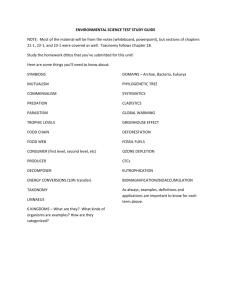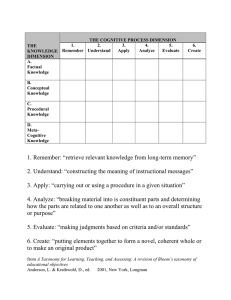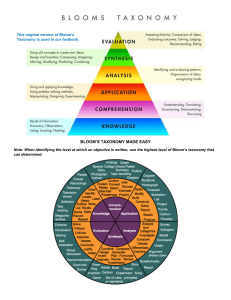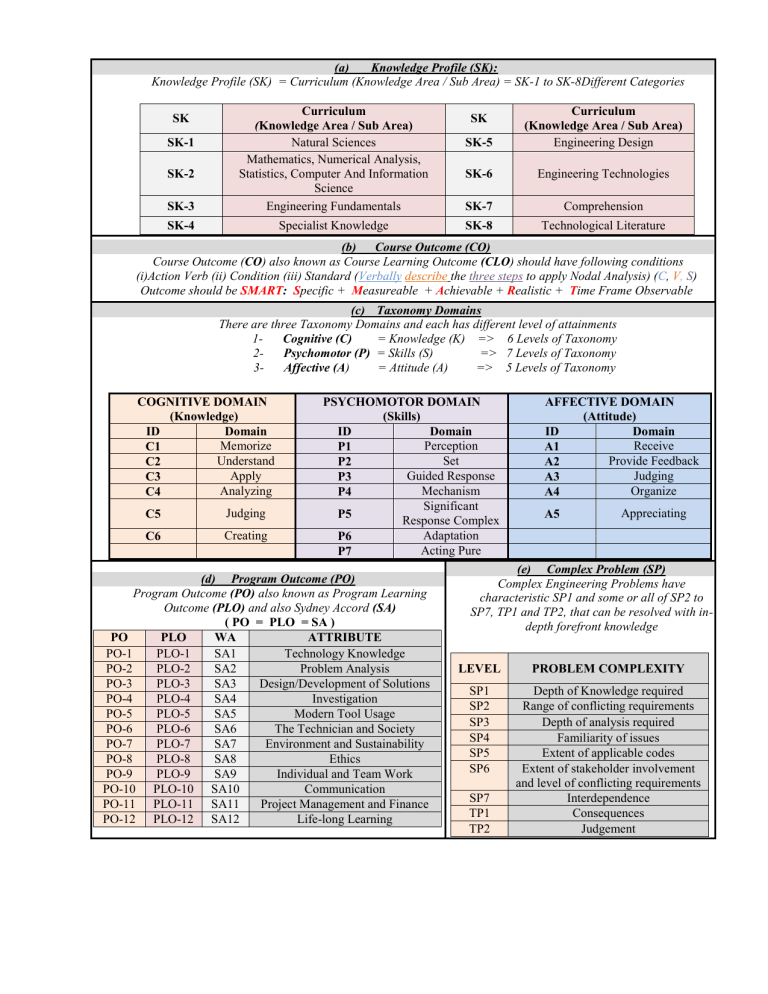
(a) Knowledge Profile (SK): Knowledge Profile (SK) = Curriculum (Knowledge Area / Sub Area) = SK-1 to SK-8Different Categories SK-3 Curriculum (Knowledge Area / Sub Area) Natural Sciences Mathematics, Numerical Analysis, Statistics, Computer And Information Science Engineering Fundamentals SK-4 Specialist Knowledge SK SK-1 SK-2 SK-5 Curriculum (Knowledge Area / Sub Area) Engineering Design SK-6 Engineering Technologies SK-7 Comprehension SK-8 Technological Literature SK (b) Course Outcome (CO) Course Outcome (CO) also known as Course Learning Outcome (CLO) should have following conditions (i)Action Verb (ii) Condition (iii) Standard (Verbally describe the three steps to apply Nodal Analysis) (C, V, S) Outcome should be SMART: Specific + Measureable + Achievable + Realistic + Time Frame Observable (c) Taxonomy Domains There are three Taxonomy Domains and each has different level of attainments 1Cognitive (C) = Knowledge (K) => 6 Levels of Taxonomy 2Psychomotor (P) = Skills (S) => 7 Levels of Taxonomy 3Affective (A) = Attitude (A) => 5 Levels of Taxonomy COGNITIVE DOMAIN (Knowledge) ID Domain Memorize C1 Understand C2 Apply C3 Analyzing C4 C5 Judging C6 Creating PSYCHOMOTOR DOMAIN (Skills) ID Domain Perception P1 Set P2 Guided Response P3 Mechanism P4 Significant P5 Response Complex Adaptation P6 Acting Pure P7 (d) Program Outcome (PO) Program Outcome (PO) also known as Program Learning Outcome (PLO) and also Sydney Accord (SA) ( PO = PLO = SA ) PO PLO WA ATTRIBUTE PO-1 PLO-1 SA1 Technology Knowledge PO-2 PLO-2 SA2 Problem Analysis PO-3 PLO-3 SA3 Design/Development of Solutions PO-4 PLO-4 SA4 Investigation PO-5 PLO-5 SA5 Modern Tool Usage PO-6 PLO-6 SA6 The Technician and Society PO-7 PLO-7 SA7 Environment and Sustainability PO-8 PLO-8 SA8 Ethics PO-9 PLO-9 SA9 Individual and Team Work PO-10 PLO-10 SA10 Communication PO-11 PLO-11 SA11 Project Management and Finance PO-12 PLO-12 SA12 Life-long Learning AFFECTIVE DOMAIN (Attitude) ID Domain Receive A1 Provide Feedback A2 Judging A3 Organize A4 A5 Appreciating (e) Complex Problem (SP) Complex Engineering Problems have characteristic SP1 and some or all of SP2 to SP7, TP1 and TP2, that can be resolved with indepth forefront knowledge LEVEL PROBLEM COMPLEXITY SP1 SP2 SP3 SP4 SP5 SP6 Depth of Knowledge required Range of conflicting requirements Depth of analysis required Familiarity of issues Extent of applicable codes Extent of stakeholder involvement and level of conflicting requirements Interdependence Consequences Judgement SP7 TP1 TP2
